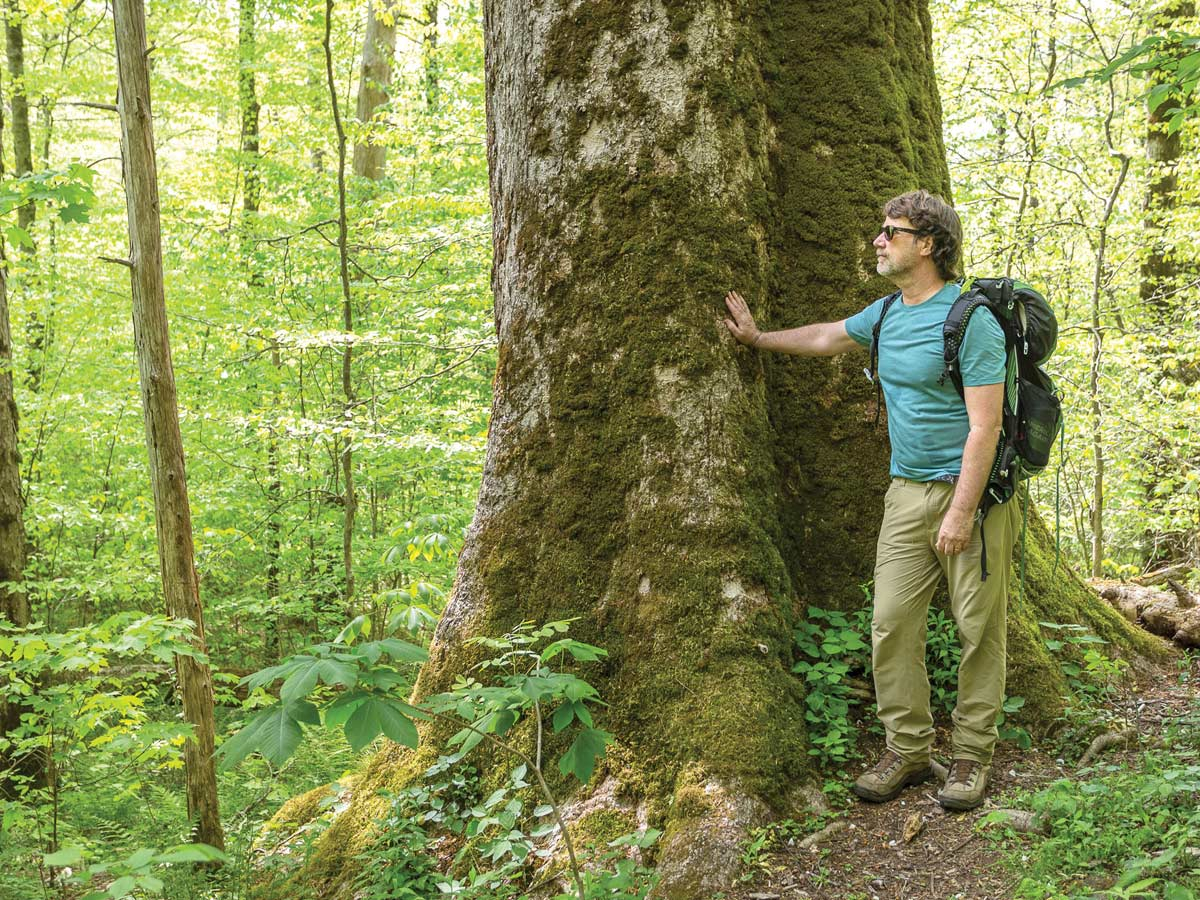Word from the Smokies: Smokies Life celebrates trees and their stories
 Steve Kemp worked as interpretive products and services director for Great Smoky Mountains Association for 30 years and began to publish the biannual journal Smokies Life in 2007.
Steve Kemp worked as interpretive products and services director for Great Smoky Mountains Association for 30 years and began to publish the biannual journal Smokies Life in 2007.
Have you ever tried to count the number of branches on a tree? One limb leads to many appendages from which grow several more, each with its own shape, size and direction. The prospect of keeping them sorted long enough to perform an accurate count presents a nigh-impossible task.
It might seem easier to count the number of trees on an acre of terrain in Great Smoky Mountains National Park. But due to the vertical nature of the land and the myriad sizes and species of trees in a healthy ecosystem, even that would prove to be a difficult feat for all but the most intrepid tree-focused humans.
The stories that can be told about the Smokies — tales involving the natural and cultural history both before and after this place became the most-visited national park — are just as impossible to count as tree branches or individual trees.
When I took my job as the creative services director for nonprofit park partner Great Smoky Mountains Association a little more than five years ago, I inherited a magazine to edit — the fourth in my career. Smokies Life was the brainchild of my story-telling predecessor, Steve Kemp, who began to publish the biannual journal in 2007.
Kemp had worked in Yellowstone and Denali national parks before arriving in the Smokies, where he would spend 30 years directing creative work and publishing books, brochures and magazines to interpret the park’s countless resources. His titles include “Trees of the Smokies, Great Smoky Mountains: A Visual Journey,” and “We’re Going to the Mountains.” The park’s Steve Kemp Writer’s Residency, managed by GSMA, is named in his honor.

Related Items
- A single old-growth tree can provide habitat for hundreds of species of insects and dozens of fungi, slime molds, mosses, ferns, and lichens like this lungwort. Michele Sons photos
Kemp planted the seed, nourished the roots, and soon Smokies Life sprouted up and became the premier benefit for GSMA’s members, who receive a new large-format, full-color issue brimming with stories each spring and fall. These 29,000 subscribers align themselves with the Smokies and already know a great deal about the park. They are those bold champions of this mountainous region who seek to increase the breadth and depth of their knowledge of all things Smokies. Reading this magazine allows them to imagine diving like the native brook trout to the deepest creek beds and soaring like the bald eagle to the highest ridges.
Those highest Smokies ridges are one of the few places in the United States that still harbor ancient trees. “One of the most compelling reasons for creating the park was to save the Smokies’ dwindling old-growth forest,” Kemp points out in the recently released fall issue’s cover story, “The Last Best Wildwoods.”
It’s a story well worth reading, and accolades have been floating in via email to both Kemp and me. One of the important takeaways is that second-growth forest — all we have left in many places — is just as critical to conserve as the rare first-growth.
“While no comprehensive apples-to-apples comparison of old-growth biodiversity to second-growth biodiversity in the Smokies has ever been completed, it’s apparent that both types of forests offer attractive habitats for different cadres of species,” Kemp writes. “The presence of both younger and more mature forests is therefore a contributor to the park’s overall biodiversity.”
My editor’s column for this issue gives a nod not only to Kemp but to Smokies resident Richard Powers, who wrote in his Pulitzer Prize-winning magnum opus, The Overstory: “Trees have long been trying to reach us. But they speak on frequencies too low for people to hear.”

- Offering attractive habitats for all kinds of species such as this millipede, second-growth forest is just as important to conserve as old-growth.
Perhaps, just maybe, some of us are beginning to cultivate an ear for the stories trees have to tell. Fortunately for me, Smokies Life’s very development has been like that of a tree. Kemp formed the trunk of this publication onto which limbs began to grow, and upon them, in turn, many branches. When it was placed in my care, I asked Kemp to continue to write for the journal — and so he forms new branches on the tree with each issue.
Our national park is full of stories, from the history of the people who once lived here to the incredible biodiversity of plants, animals and lifeforms. Smokies Life was created as a forum for sharing some of the best of these Smokies stories. It is my great joy to facilitate the work of the many quality writers, photographers, designers, illustrators, and editors who bring these stories to life for our audience — and who allow nature to teach the great benefits of collaboration.
Smokies Life is available in the GSMA-run visitor center bookstores in Great Smoky Mountains National Park and also at visitor centers outside the park in Gatlinburg and Townsend, Tennessee, and Bryson City, North Carolina. Visit SmokiesInformation.org to become a member of the association and receive the magazine in the mail.
(Frances Figart (rhymes with Tiger) is the editor of Smokies Life and the Creative Services Director for the 29,000-member Great Smoky Mountains Association, an educational nonprofit partner of Great Smoky Mountains National Park. Reach her at This email address is being protected from spambots. You need JavaScript enabled to view it..)









